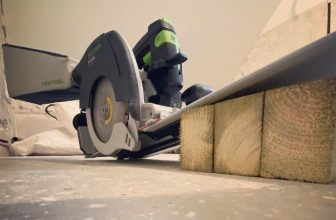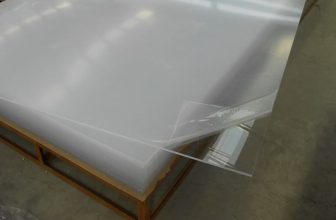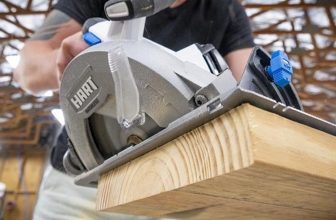Track Saw vs Circular Saw: What to Pick?
Track saws and circular saws are quite popular among professional carpenters and home masters. Despite this, the choice between them is not always so obvious. There are many variations of both types of these effective tools on the market.
Both saws have round blades for making straight or angled cuts. Also, they are suitable for working with different materials and surfaces.
Despite this, depending on the type of work, each of the products will have its pros and cons. So, a track saw vs a circular saw — which tool will satisfy your needs? This article will help you make the right choice.
Contents
Track Saw vs Circular Saw: Pros/Cons & Difference Explained
In this guide, I will explain why you need a track saw or a circular saw and how they work. Also, I will take a look at their differences and provide a list of the pros and cons of a plunge saw vs a circular saw so that you can choose the best option.
What is a circular saw?
A circular saw is a powerful tool with a toothed circular blade that rotates around the axis of the saw. This saw can be corded or cordless. Cordless models are equipped with batteries to generate electricity, while corded saws are powered from a cord.
The teeth on the edges of the metal blades serve to make the necessary cuts. The saw makes straight and relatively accurate cuts, but they are not as precise as the cuts made by a track saw.
When to use a circular saw?
One of the most outstanding aspects of a circular saw is speed. A circular saw is a versatile tool that is suitable for work with various materials, and it is ideal for large projects with its mobility and convenient design.
A circular saw is great for cutting softwood, hardwood, plywood, and other wood materials. Soft metals are no problem either! It can cut aluminum, copper, or bronze. Also, the saw is suitable for working with plastic of different densities.
Pros of circular saw
- It has a compact design with several charging options;
- A circular saw is a very adaptable tool that comes with various types of blades to cut through different materials and objects;
- It has lots of type options to choose from. Each type of circular saw is specialized in different cuts. Overall, circular saws are more powerful than track saws;
- It is best for larger projects because it’s extremely quick and easy to operate. High speed can significantly reduce the time you spend on work;
- The cordless model is portable, which allows you to use it at any place you need.
Cons of circular saw
- The cuts are less accurate and smooth than track saw cuts. Also, the saw can’t make a splinter-free cut;
- You are forced to cut from the end of a piece of material, reducing the use of the tool;
- It has a kickback and produces a significant amount of debris and dust;
- The cord might damage, and the battery life can run out during work.

What is a track saw?
A circular saw with the track is an updated version of the circular saw we already know. It is a type of circular saw with a long rail attached to it. A metal track is attached to the workpiece, so the saw moves along the rail during the work process. In this way, the saw makes long and precise cuts.
It also has a special rubber strip at the bottom of the saw that holds the materials you are working with. It’s made for comfort and precision when cutting. The tool is usually preferred by professionals who are especially interested in the accuracy and quality of cuts they make.
When to use a circular saw?
The track saw uses are slightly more varied than that of a circular saw. It is perfect if you need to cut a large number of blanks. It’s not as portable as a circular saw, but its performance makes it an indispensable tool for larger jobs.
In addition, using a track saw is necessary for work that requires increased accuracy and smoothness of cuts. In the case of woodworking, such a saw can play the role of a circular saw, panel saw, and even a miter saw. This makes it a versatile tool and can save you some money.
Pros of a track saw
- This saw has a useful tool for collecting dust in a cloth bag. It helps keep your workspace clean and free from debris;
- It makes clean cuts with smooth edges. A track saw can handle even the hardest tasks when you need to make long cuts or cuts at steep angles. So, it is commonly used by professionals;
- You can make angle cuts with it. A circular saw does not have this option;
- The saw is powerful enough to cut metal sheets and various types of wood;
- It plunges into the workpiece to a predetermined depth, after which you can make a cut, so it is safer than its counterpart.
Cons of a track saw
- It provides less mobility in comparison with a circular saw;
- It is more expensive than a circular saw;
- It takes time to set everything this tool needs to start working.
Each saw has its main advantages and disadvantages. A circular saw vs a track saw, which one will suit your needs the best? Let’s find out how to choose the perfect saw.

Which One Suits You Best
Now that we know what a circular saw, a track saw, and their main characteristics are, you might be interested in learning their differences and factors that can be decisive when choosing. So, here is a list of the main differences between these two popular saw types.
Structure
One of the key differences between these saws lies in their structure. Track saws look like upgraded circular saws. Track saws have a rail on which the blade moves, while a circular saw does not have such a device. But when it comes to power, circular saws perform better.
Portability and safety
Both saws are pretty portable, but a track saw is more lightweight than its opponent. The circular type has cordless models, which are very convenient to use in tight spaces. A track saw is also safer due to its structure. In any case, before cutting, you should familiarize yourself with the safety rules.
Which cuts do they make?
Another main difference is the type of cut the saws perform. A circular saw can create a cross and rip cuts. On the other hand, a track saw can make the same cuts and more complex miter cuts. Moreover, a track saw does not leave rough edges after cutting.
Overall, the main difference between a track saw vs a circular saw with a guide is that a track saw makes more precise cuts, while a circular saw gains in power. It remains to decide on the budget you can spend. Track saws can be more expensive than circular saws, so you should consider this fact when choosing.

FAQ About Circular and Track Saws
Are you still not sure which one to pick? Here you can find the most frequently asked questions about this topic.
What holds a track saw in place?
Track saws can stay in place thanks to non-slip strips on the underside of the saw. It is very convenient and safe for materials because the strips do not leave marks.
Can any circular saw be used as a track saw?
Yes, with some effort and modifications, you can use circular saws almost like track saws. If you’re worried about the track slipping on smooth surfaces, you can use special clips. This way. your saw will be fixed and the clamps will not interfere with the cut.
Can I use a track saw without the track?
Yes, you can use a track saw without a track. It will function as a regular circular saw because all saws work pretty similarly. With the help of rubber pads on the bottom of the saw, the tracks do not move while cutting. Therefore, the circular saw can also be used as a track saw.
Also read:
- 7 Best Worm Drive Circular Saws
- Best Metal Cutting Circular Saws
- Worm Drive vs Direct Drive Circular Saw
- How to Change a Circular Saw Blade
- Types of Circular Saw Blade
- How to Cut an Angle With a Circular Saw
- How to Cut Plywood With a Circular Saw
- Table Saw vs Circular Saw
- 6 1/2 vs 7 1/4 circular saw
Choose the Right One!
Both saws have unique advantages and disadvantages and are extremely useful for carpenters. With a few minor differences, both saws can make your life easier when it comes to cutting.
I hope this guide has helped you decide on the best product for you. What jobs do you need a circular saw or track saw for? Share your experience and ask questions in the comments below.
“A good tool stays with you for many years and choosing carefully ensures the job is done right, your work is neat, and the tool is always a pleasure to use”





